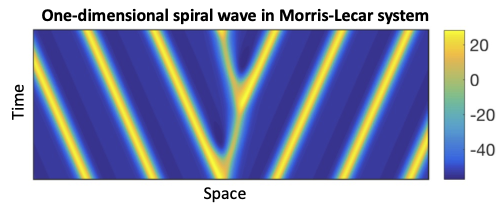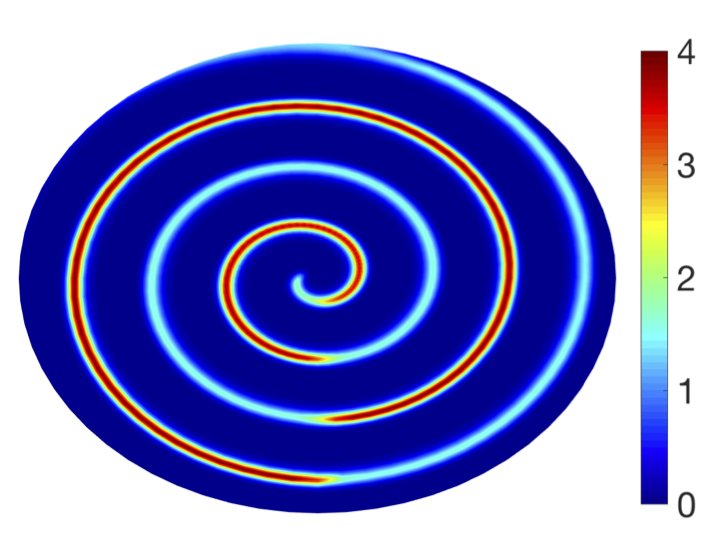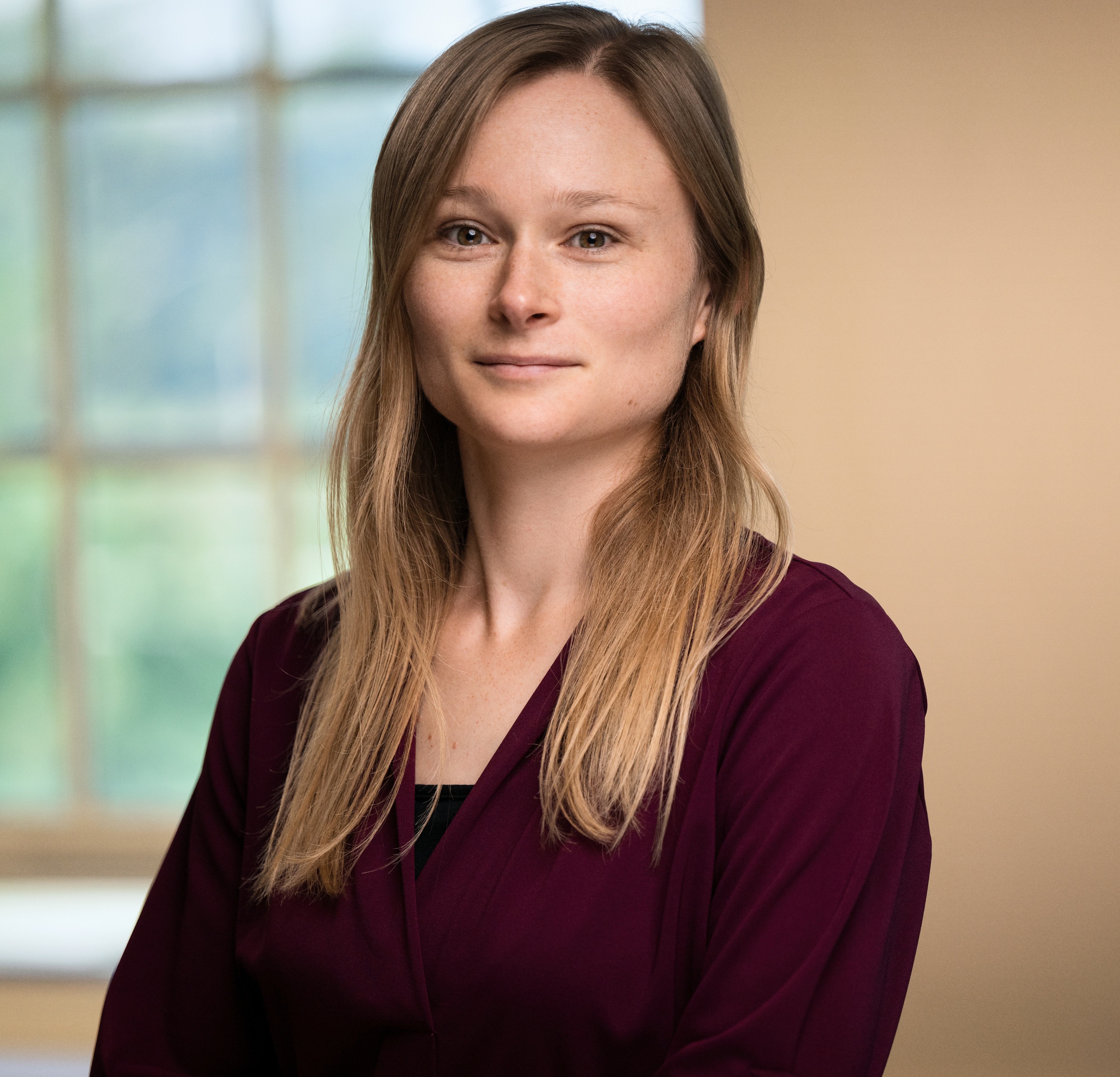Research
Patterns are ubiquitous in biological and physical processes. The propagation of electrical pulses in cardiac tissue, oscillations of chemical reagents, and movement of animals are all examples of naturally occurring spatiotemporal patterns. I am an applied mathematician who is motivated by how math can be used to uncover the fundamental principles of the natural world. As such, I have studied the formation and stability of spatiotemporal patterns related to cardiac arrhythmia, chemical oscillations, and blue whale migrations. Summaries of recent and ongoing projects are below.
Traveling Waves and Cardiac Arrhythmia
Regular cardiac function is characterized by coherent, periodic traveling waves of electrical activity driving heartbeats. When this process goes awry, the ensuing abnormal and irregular rhythms are known as arrhythmias. Much of my research has focused on studying traveling waves and patterns that contribute to arrhythmia initiation and termination.
Throughout this area of research, I focus on spiral and traveling waves waves that arise in reaction-diffusion systems, and I apply a variety of analytical and computation techniques motivated by methods in dynamical systems and nonlinear waves.
Related Work
- S. Dodson and T.J. Lewis, Wave Reflections in Excitable Media Linked to Existence and Stability of One-Dimensional Spiral Waves, SIAM Journal on Applied Dynamical Systems, 21 2 (2022) 1631-1659
- GitHub Repository: 1d_spiral_waves
- S. Dodson and B. Sandstede, Behavior of Spiral Wave Spectra with a Rank-Deficient Diffusion Matrix, SIAM Journal on Mathematical Analysis, 54 3 (2022) 3789-3816.
- S. Dodson, B. Sandstede. Determining the Source of Period-Doubling Instabilities in Spiral Waves, SIAM Journal on Applied Dynamical Systems 18, 4 (2019) 2202-2226.
- GitHub Repository: Spiral Waves, Boundary Sinks, and Spectra
- H.M. McNamara, S. Dodson, Y-L Huang, E.W. Miller, B. Sandstede, and A.E. Cohen. Geometry-Dependent Arrhythmias in Electrically Excitable Tissues, Cell Systems 7 4 (2018) 359-370.
Presentations
- One-dimensional spiral waves and reflection-induced cardiac arrthymia, Applied PDE Seminar, University of Washington (virtual), May 2021.
- One-Dimensional Spiral Waves, Source Defects, and Initiation of Cardiac Arrhythmia, poster presented at Dynamics Days Digital 2020, August 2020.
- Role of Spectra in Period-Doubling Instability of Spiral Waves, SIAM Conference on Applications of Dynamical Systems, May 2019, Snowbird, UT.
- Spectral Properies of Spiral Waves in the Karma Model, poster presented at SIAM Conference on Applications of Dynamical Systems, May 2017, Snowbird, UT.



Agent-Based Models and Migrations of Blue Whales
Northern Pacific blue whales are a highly dynamic population that make vast yearly migrations to meet their energetic needs. Along with collaborators, we developed and analyzed agent-based models to investigate how environmental and prey conditions and social calls impact the migratory behavior. The model accurately captures migration behaviors and yearly differences in the spatiotemporal distribution driven by variations in prey abundance.
Related Work
- S. Dodson, B. Abrahms, S. J. Bograd, J. Fiechter, and E. L. Hazen. Disentangling the biotic and abiotic drivers of emergent migratory behavior using individual-based models, Ecological Modelling, 432 (2020): 109225.
